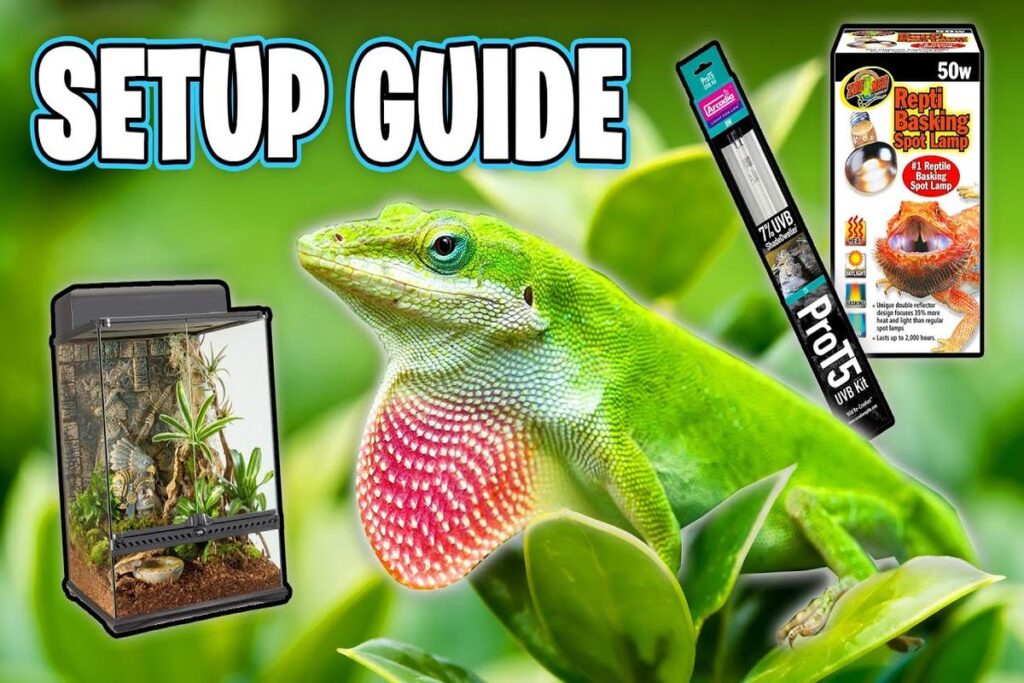To set up the Lizard Lighting system, follow these steps: 1. Unbox the Lizard Lighting kit and ensure all the components are present. 2. Identify a suitable location for the lights. Consider factors such as the desired lighting effect, power outlet accessibility, and potential hazards. 3. Connect the lights to the power source using the included power cables. Make sure to follow the manufacturer’s instructions for proper electrical connections. 4. Arrange the lights in the desired configuration, whether it’s stringing them along a wall, suspending them from a ceiling, or placing them on stands. 5. If applicable, connect any additional accessories such as light diffusers or color filters to achieve specific lighting effects. 6. Switch on the power source and test the lights to ensure they are functioning properly. 7. Adjust the positioning and angles of the lights as needed to achieve the desired lighting effect. 8. If available, utilize any built-in controls or remote control functions to customize the lighting settings (e.g., brightness, color, flash patterns). 9. Secure any loose cables or wires to prevent tripping hazards or damage to the lights. 10. Regularly inspect and maintain the Lizard Lighting system to ensure safe operation and longevity. Remember to always refer to the manufacturer’s instructions for specific guidance on setting up and using the Lizard Lighting system you have.
How Long Should Lizard Lights Be On?
Do the research for the specific animal that you have, but agood rule of thumb is to program the UVB and daytime light/heat to be on for 12 hours and then turned off for 12 hours.
How Much Uv Do Lizards Need?
While temperature and day/night cycles vary between species, most desert reptiles will require 10% – 12% UV light, which can be achieved either with aUV fluorescent strip (great for ensuring all the vivarium is lit up with UV), or acompact bulb (more precise areas) or with amercury vapour bulb (simulates the sun …
Do Lizards Need Light All Time?
Diurnal wild reptiles typically spend many hours aday basking in the sun, absorbing this light. Crepuscular reptiles (active during twilight) and nocturnal reptiles (active at night) may not openly bask, they too increase their vitamin Dconcentrations following UV exposure in captivity (e.g., leopard geckos).
Which Light Attracts Lizards?
bright light
Are Led Lights Okay For Lizards?
LED fixtures should be placed Overhead Reptiles have eyebrow ridges, and some even have upper eyelids to shade the eyes’ surface. To put LED over these kinds of species, it’s recommended to place them directly above areptile’s head and not to the side.
How Long Can Lizards Go Without Uv Light?
Without UVB light, they can develop metabolic bone disease, which can be fatal. While some sources claim that bearded dragons can go up to 2 weeks without UVB light, going longer than afew days is not recommended. It’s best to provide them with UVB light regularly.
How To Tell If A Light Is Uvb?
In short: the only way to know for sure if the basking bulb you’re considering also emits UVB is to read the label.
What Kind Of Light Do Lizards Need?
In addition to aheat source, many reptiles also require UVB lighting. UVB is atype of ultraviolet light that reptiles need to synthesize vitamin D3, which is essential for bone health. Without adequate UVB, reptiles can develop metabolic bone disease, which can be fatal.
Do Lizards Need Heat At Night?
Every reptile or amphibian species has different heating requirements and always need awarm-side and acool-side during the day and at night.
This helps them regulate their temperatures appropriately so they can be happy, healthy, and active!
Do Lizards Like To Sleep In The Dark?
Many species of lizards hide in narrow, dark places when they are resting or during brumation (hibernation), as well as lay their eggs in such places, as they offer protection from predators and harmful environmental factors.
What Does Red Light Do For Lizards?
Red bulbs were designed with the thought they would produce night time heat without producing abright light. In actuality, this disrupts the reptile’s photoperiod, affecting their sleep, eating, behavior and overall health due to the stress it can cause.
Do You Turn Off Lizard Lights At Night?
In addition, UVB lights should not be turned on at night. The principle is also very simple. The UVB light will emit light, and the lizard needs to rest at night. If you turn on the UVB light 24 hours aday, it will first cause it to not know what is in the day and night, and secondly, it will affect the lizard’s rest.
Are Black Lights Good For Lizards?
No, the kind of black lights people use to make their white clothes glow purple are NOT suitable for reptiles. They can damage the reptile’s eyes. The blue “night light” bulbs that are used are not the same thing as blacklight tubes.
Can You Use A Regular Lamp For A Lizard?
Any incandescent white light can be used for daytime lighting and heating. Nocturnal reptile lights and dark decorative red, blue and green incandescents provide dim lighting that will not disturb the sleep of diurnal (active during the day) reptiles and isn’t stressful to nocturnal reptiles.
Is Sunlight Good For Lizards?
Social behaviours, activity levels, feeding, and reproduction are all increased in lizards exposed to adequate UVA. UVA is found in natural lighting (sunlight), full spectrum artificial lighting, and good quality UV lights.
Do Lizards Hear Humans?
It has been concluded that most lizards have good auditory sensitivity over arange from 100 to 4,000 hertz and relatively poor hearing for lower and higher tones. This auditory range is not very different from that of humans, although somewhat more restricted than that of most mammals.
Are Lizards Sensitive To Light?
However, at some point in evolution agroup of lizards, the geckos, turned to anocturnal lifestyle. In response to the demands of nocturnal vision without rods, the cones of nocturnal geckos have become much larger and more light-sensitive than those of their diurnal relatives (Röll, 2000).
Do Lizards Like Uv Light?
As ageneral rule, if your lizard is diurnal (awake during the day) then aUV bulb is needed. Key species that need UV include bearded dragons, monitors, tegus, skinks, chameleons, turtles and tortoises and most frogs. While some other species may not need access to UV, most can benefit from low level UV exposure.
Do Lizards Run Away From Light?
Lizards are cold-blooded, so they love bright, warm environments. Turning off the lights when you leave aroom can make that area less hospitable.
Do Lizards Like Cold?
Just like we don’t want to bathe in cold water in winter, lizards don’t want to be near anything cold, ever.
How Do You Keep Lizards Warm At Night?
This can be done using either aheat lamp, including halogen bulbs or aceramic heat emitter, installed into aceramic bulb holder, both of which should be connected to acompatible high-range thermostat to regulate and maintain aconsistent temperature.
Do Lizards Need A Heat Lamp At Night?
Nocturnal reptiles generally don’t need additional heat during the night as they have adapted to the lower temperatures, for this reason the main purpose of anight bulb is to provide agentle light source to replicate the time they are most active, rather than asource of heat.
What Colour Light Is Uvb?
UVB is aform of ultraviolet (UV) light in the sun’s rays. In UVB light treatment, these rays (‘short waves’ also known as ‘narrow band’) are used These rays are responsible for burning and tanning, but can help reduce inflammation in the skin.
How To Detect Uv Light At Home?
An ingredient in tonic water, called quinine, absorbs UV and releases it, causing it to glow blue (or fluoresce). Demonstrate how tonic water fluoresces when the black light is turned on. Tell students that the blacklight emits UV light, not visible light, so it doesn’t look bright to us.
Are Led Lights Good For Lizards?
As much as light is essential for most reptiles, so is the nighttime. LED grow light, with its ability to mimic sunlight and adjustable control, signifies its worth. Putting them on during the day and dimming these lights at night altogether ensures an optimal environment for reptiles.
Can I Use A Regular Light Bulb For My Lizard?
As long as you match the bulb wattage to the lamp fixture and position it properly, aregular lamp can be used safely with aspecialized UV heat bulb for reptile or amphibian enclosures. Just be sure to follow the manufacturer’s instructions for optimal placement and use.
How Long Does A Lizard Light Last?
The UV output of abulb decreases with age, so bulbs should be replaced every 9–12 months or as directed by the manufacturer. For UV light to work, it must reach the pet in an unfiltered form, which means that there must be no glass or plastic between the pet and the light.
What Do Lizards Do At Night?
Diurnal (day active) lizards, such as anoles, do sleep at night. They often align themselves on grass stems or branches. Other diurnal lizards, such as whiptails, will retreat into aburrow at night and sleep. Nocturnal (night active) lizards such as many geckos are active and seek prey at night.



